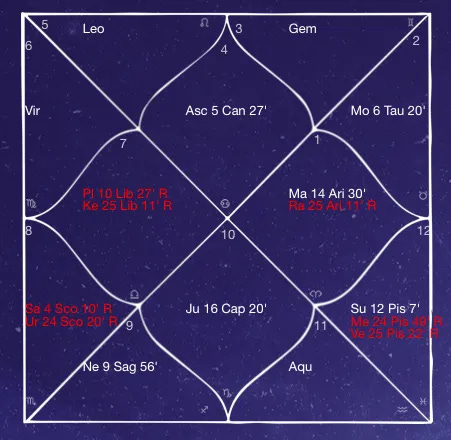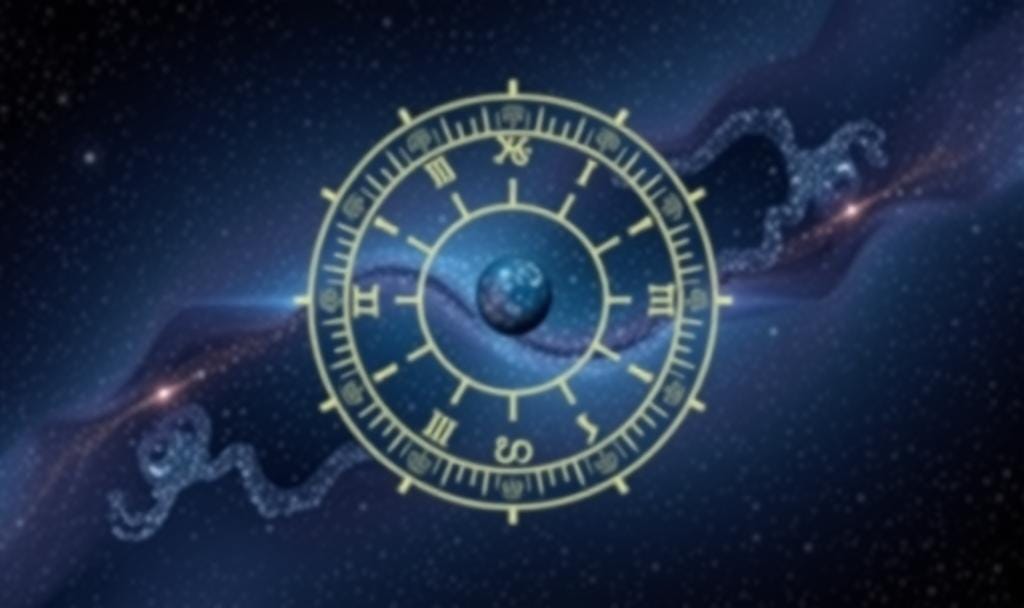The third Nakshatra in this series is Krittika. Interestingly, Krittika was originally considered the very first Nakshatra in Classical Vedic astrology. We’ll set aside the technical reasons behind that for now—no need to get lost in the mechanics just yet.
Before diving in, I recommend checking out my first two posts in this series for context on how each Nakshatra is positioned:
Now, let’s continue on to the third Nakshatra — Krittika.
The Basics

Unlike the previous two Nakshatras we explored, Krittika spans across both Aries and Taurus. It stretches from 26°40' Aries to 10°00' Taurus (sidereal).
This means that, depending on the exact degree of your Moon, you could either fall under Aries or Taurus. Naturally, Krittika in Aries expresses itself quite differently from Krittika in Taurus—each placement brings its unique qualities and energies.
The Myth

Several myths are associated with Krittika, but one of the most prominent involves the demon Taraka and the warrior god Kartikeya.
The story goes like this:
The demon Taraka was blessed by Brahma, the creator, with a seemingly invincible boon—only a seven-day-old son of Shiva could defeat him. However, Shiva was deep in ascetic meditation in the Himalayas, with no intention of having a child.
Determined to overcome this obstacle, the gods devised a plan. They sent Kamadeva, the god of love and desire, to awaken Shiva’s passion. When Shiva’s divine seed was finally obtained, it was carried to Earth by Agni, the god of fire.
The seed was then nurtured by six Krittikas—divorced wives of ancient sages—who each gave birth to a son. These six infants were later embraced by Parvati, Shiva’s wife. Through her loving embrace, the six became one being with six heads and twelve arms, embodying the unity of their origins. Thus, Kartikeya was born.
At just seven days old, Kartikeya fulfilled the prophecy by vanquishing the demon Taraka.
For a more in-depth exploration of this myth, I recommend Vic DiCara’s 27 Stars, 27 Gods: The Astrological Mythology of Ancient India and Komilla Sutton’s The Nakshatras.
Symbolism
The name Krittika has deep symbolic roots. The Sanskrit word "Krit" means to cut or divide, while "tika" translates to challenge. Together, Krittika embodies the essence of cutting, dividing, challenging, or splitting apart. This is why it’s often symbolized by sharp objects—knives, blades, or razors—tools that represent precision, discernment, and the ability to separate the essential from the non-essential. As a result, Krittika is also linked to being critical, analytical, and incisive.
Beyond its literal meaning, the myth we discussed earlier adds deeper layers to Krittika’s symbolism:
Agni (Fire) - Since Agni, the god of fire, carried Shiva’s divine seed to Earth, Krittika inherits the fiery essence of purification, transformation, and initiation. In ancient times, fire was central to life—it led processions in the dark, preceded armies in battle, and was the first element kindled during rituals and ceremonies. Fire symbolizes the spark that initiates action, whether it be warfare, group movements, or spiritual rites. In this spirit, Krittika is often seen as the initiator or catalyst, driving progress and transformation.
Mars - Kartikeya, the warrior god, was born through the combined energies of Shiva, Agni, and the nurturing embrace of the Krittikas—the ‘divorced’ wives of ancient sages. Known as the child of fire and the warrior god, Kartikeya embodies courage, discipline, and martial prowess. This links Krittika to the fiery, assertive qualities of Mars, the planet of action, aggression, and strategy.
Rulerships
Now that we’ve explored the mythology and symbolism of Krittika, let’s look into its rulerships.
Since Krittika spans both Aries and Taurus, we need to examine two sets of rulerships—one for the Aries section and another for the Taurus section. Following the same framework from our previous posts, there are two layers of rulership to consider:
Rulership of the Nakshatra Itself - Krittika is ruled by the Sun, the celestial body symbolizing strength, leadership, authority, vitality, and ambition. The Sun’s energy is both nurturing and fierce—essential for life, yet potentially destructive if its intensity becomes overwhelming. This rulership reflects Krittika’s core qualities of brilliance, decisiveness, and the power to illuminate or burn, depending on proximity and balance.
Rulership of the Zodiac Sign Placement
The influence of Krittika also depends on where it falls within the zodiac in one’s chart:
If placed in Aries:
The first three padas (quarters) of Krittika lie in Aries, a sign ruled by Mars. Mars embodies courage, action, assertiveness, and the fiery energy of a warrior. When Krittika resides in Aries, its cutting and decisive nature takes on a dynamic, bold, and action-driven quality, making individuals more daring, energetic, and pioneering.If placed in Taurus:
The final pada of Krittika lies in Taurus, governed by Venus. Venus represents material wealth, pleasure, beauty, sensuality, and luxury. In Taurus, Krittika’s fiery energy becomes more refined, steady, and focused on stability, material success, and comfort. Here, the cutting quality is applied more toward refinement, patience, and cultivating abundance.
Putting it All Together
Now that we’ve explored the mythology, symbolism, and rulerships of Krittika, let’s bring it all together to understand how this Nakshatra can manifest in a person’s life and character.
To recap, Krittika embodies the following associations:
Agni (The God of Fire):
Represents initiation, transformation, and the role of a catalyst—sparking new beginnings or changes with intensity and purpose.Kartikeya (The Warrior God):
Symbolizes passion, protection, defense, and destruction of obstacles—an embodiment of disciplined strength and strategic action.Sharp Objects (Blades, Knives, Razors):
Reflects the power of separation, cutting through illusions, challenges, sharp thinking, discernment, and constructive criticism.The Sun (Nakshatra Ruler):
Denotes authority, leadership, vitality, ambition, and personal power—offering both warmth and the potential for intensity or dominance.Mars (If Placed in Aries):
Infuses courage, bravery, assertiveness, dynamic energy, and the spirit of a warrior ready for action and conflict.Venus (If Placed in Taurus):
Emphasizes wealth, material prosperity, sensuality, pleasure, beauty, and luxury—grounding Krittika’s fiery nature with stability and indulgence.
What would it look like if the moon was placed in Krittika, in Aries?

Since the Moon represents one’s inner world, mind, and emotions, having the Moon in Krittika within Aries can shape someone into a sharp and critical thinker—sometimes to the point of being overly critical. If left unchecked, their passion for what they care about can manifest as aggression or intensity in their communication.
These are the individuals you want by your side when inspiration and energy are needed. They excel at motivating others, sparking change, and taking decisive action. However, their directness and intensity might make them less suitable in situations that require gentleness, empathy, or emotional subtlety. They are the warriors who speak out, challenge the status quo, and push for transformation but often struggle with offering emotional softness or compassionate language.
This heightened intensity arises from the fiery combination of the Sun’s radiance and Mars’ passion in Aries. Their energy can be overwhelming in calm or emotionally sensitive environments but becomes invaluable in moments that demand boldness, leadership, and the courage to initiate change.
If we are to imagine a formula for how this could show, it would look something like this:

What would it look like if the moon was placed in Krittika, in Taurus?

When placed in Taurus, Krittika naturally takes on the qualities of the sign and becomes influenced by Venusian energy. While Krittika’s inherent nature remains critical and discerning, the way this quality is expressed differs significantly from its manifestation in Aries.
As we’ve seen, Krittika in Aries tends to be a harsh critic, delivering feedback with bluntness and intensity. In contrast, Krittika in Taurus still carries that sharpness but tempers it with diplomacy and tact. The fiery sharpness of the Sun is softened by the balance, grace, and stability of Venus, allowing critiques to be delivered with a sense of refinement and emotional sensitivity.
While the drive to challenge and refine remains strong, individuals with this placement are more likely to express their insights thoughtfully—aiming for harmony and constructive feedback rather than confrontation.
If we are to illustrate this, it will appear to be something along these lines:

A Quick Example
Now that we have gone over some primary traits of Krittika, let’s take a look at a birth chart as an example:
A quick disclaimer: This is a general analysis. While this can give you some pointers in understanding yourself, it’s important to remember you need to consider the entire chart for a holistic understanding.

This is an example of a chart that shows the Moon placed in Taurus, in Krittika Nakshatra, in the 11th house.
Generally speaking, this person would be:
Intelligent, has leadership qualities, determined, has a strong sense of purpose, and critical.
11th House Influence - Since the Moon is placed in the 11th house of Community, Social Networks, and Long Term Desires, they would likely be involved in some form of philanthropy and would be driven toward their desires and goals.
Taurus Rulership and Venusian Influence - Since the ruler of Taurus is Venus, and Venus is placed in the 9th House of Philosophy and Travel and is also closely associated with Mercury in the same house, along with the Sun, the ruler of Krittika, they would likely be a traveler, and interested in other cultures and philosophies.
Rahu and Mars in the 10th House - With both Rahu (ambition and obsession) and Mars (drive and action) placed in the 10th house of career and the public sphere, this individual is likely to be a public figure—potentially an artist, activist, or influencer. They could be recognized for their bold, outspoken stance on social issues and their active involvement in philanthropy.
Conclusion
That wraps up our exploration of the third Nakshatra, Krittika. In the next post, we’ll dive into the fourth Nakshatra — Rohini.
Before we conclude, I’ll leave you with this reminder:
Astrology is a tool to bring the unconscious into consciousness—not a blueprint of your fate.
Use it to nurture the patterns that empower you and break free from those that no longer serve your growth. The stars may offer guidance, but the path forward is always yours to choose.
Resources
The Nakshatras: The Stars Beyond the Zodiac by Komilla Sutton
The Nakshatras by Dennis Harness
The Essentials of Vedic Astrology by Komilla Sutton
Nakshatra — The Authentic Heart of Vedic Astrology by Vic DiCara
27 Stars, 27 Gods: The Astrological Mythology of Ancient India by Vic DiCara







